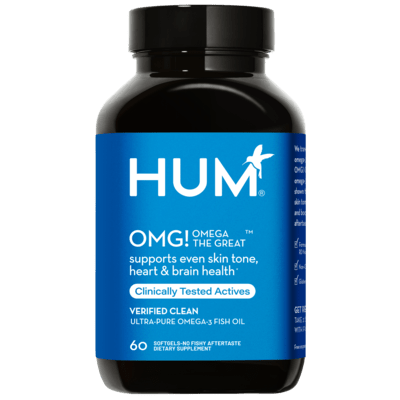THE WELLNEST • Food • Healthy Eating
The Top 6 Healthiest Fish to Eat, According to a Dietitian
By Shavonne Morrison, MS, RD, LD •
August 26, 2021
Medically Reviewed By
Gaby Vaca-Flores, RDN, CLE
Registered Dietitian Nutritionist
Shavonne Morrison, MS, RD, LD, breaks down the benefits of eating fish in your weekly diet. Plus: her picks for the six healthiest types of fish that deserve a spot on your plate.
Fish is one of the healthiest proteins you can include in your diet. It’s low in saturated fat, contains heart-healthy omega-3 fatty acids, and packs vitamins and minerals like vitamin D, calcium, and iron.
However, not all fish are created equal. To start, you may know that the way in which fish is prepared affects how nutritious it is. But what you may not have considered is which types of fish offer the most nutritional bang for your buck.
Before we take a look at the healthiest fish to eat, let’s first explore the benefits of fish that make it a star component of a healthy diet.


Benefits of Eating Fish
Multiple studies have demonstrated the benefits of eating fish regularly. In fact, the USDA recommends eating fish two to three times a week for maximum health wins. According to the FDA, fish has more B12 and vitamin D than any other type of food. Plus, similar to many other protein sources, fish is also a good source of iron. One review of studies found that non-fried fish consumption was associated with better outcomes for heart health. In contrast, those who consumed fried fish had an increased risk of heart issues, illustrating that cooking methods play a vital role in the health potential of certains food. Headache sufferers may also get a boost from fish. A 2021 study found that people had fewer and less intense headaches when they consumed a diet higher in fatty fish compared with those who ate a diet higher in vegetable-based fats and oils. While fish contain many healthy nutrients, certain fish can also be higher in mercury, a heavy metal, and polychlorinated biphenyls (PCBs). PCBs are industrial chemicals that can be harmful to health, and while they were banned in 1979, they may still appear in things produced before that time. Due to human activity, both mercury and PCBs can get into the bodies of water where fish live. The amount that accumulate in fish largely has to do with where they fall on the food chain. Larger fish and bottom feeding fish (think: swordfish, king mackerel, tilefish, Chilean sea bass) can contain higher levels of these contaminants, making smaller fish (like anchovies and sardines) a better option. While this is an important consideration when choosing fish for all people, women of childbearing age or who are pregnant or breastfeeding should eat low-mercury fish to avoid exposure to methyl mercury, which can have adverse effects on fetal brain and nervous system development. This chart from the FDA can be helpful to identify the best fish options that are low in mercury.
How to Eat Fish Sustainably
In addition to considering contaminants, sustainability should be on your mind when choosing fish to ensure it’s not only healthy for you, but also the environment. With the increasing demand for fish globally over the past several decades, the industry has become highly commercialized. Most of the fish available at your local supermarket is likely farmed. Although this isn’t entirely bad, it does contribute to the unsustainable practice of overfarming. Overfarming occurs when fish is produced at the expense of maintaining natural habitats due to increased demand. So, while evidence shows that there are still health benefits to farmed fish, environmental concerns remain. (It’s worth noting that overfishing, or catching too many fish at once and depleting the population, is also problematic.) To help conserve our oceans and prioritize shopping for sustainable seafood, it’s best to buy local fish when you can. If you live in an area that lacks locally sourced seafood, choosing domestic seafood is your next best option to reduce your carbon footprint. As a helpful guide, the Monterey Bay Aquarium Seafood Watch keeps an updated list of the best choices, good alternatives, and fish to avoid.What Are the Healthiest Fish to Eat?
Now that you’re familiar with the health benefits of eating fish and how to enjoy it in a sustainable way, you’re likely curious about the best fish to eat. Here’s a list of the six healthiest fish you can put on your plate.1. Salmon
Salmon is the poster child for healthy fish—and for good reason! Salmon packs healthy omega-3 fats, which can help reduce inflammation in the body and provide heart-protective benefits. One small cooked salmon filet contains:- 321 calories
- 43 grams of protein
- 16 grams of fat
- 0.8 mg of iron
- 8.5 µg folate
- 197 mg choline
- 23 µg vitamin D

2. Sardines
Sardines are a smaller fish and therefore low in mercury and potential contamiants, plus, they’re a great source of B12. Sardines are typically found canned in oil or water, so they’re an easy way to get your fish fix in at lunch or on busy days. They can taste “fishier” than other types of fish, but are well worth the nutritional boost. Try eating them in other foods you love, such as blending into a pesto, mixing into egg salad, or putting into a pasta dish. Two sardines, canned in oil and drained contain:- 50 calories
- 6 grams of protein
- 2.75 grams of fat
- .7 mg of iron
- 95.3 mg of potassium
- 2.4 µg of folate
- 18 mg choline
- 1.15 µg vitamin D
- 0.122 g DHA
- 0.114 g EPA
3. Tuna
Tuna is one of the most popular types of fish to eat. For more budget-friendly options, it’s readily available at supermarkets canned in water or oil, as well as in the frozen aisle. You can also purchase it fresh from the seafood section. Opt for light tuna over albacore, which is a larger fish and contains higher levels of mercury. One small, cooked filet of tuna contains:- 284 calories
- 51 grams of protein
- 7.5 grams of fat
- 1.6 grams of iron
- 920 mg of potassium
- 3.4 µg of folate
- 135 mg choline
- 3.6 µg vitamin D
- 0.184 g DHA
- 0.025 g EPA
4. Cod
Like most fish, cod is low in saturated fats and high in heart-healthy fats and protein. It’s easy to find in most stores since it often comes in a frozen, highly processed form. However, the key is to opt for fresh cod and avoid buying pre-seasoned, pre-battered, or fried versions for the greatest nutritional benefits. One small, cooked filet of cod contains:- 201 calories
- 32 grams of protein
- 7 grams of fat
- 0.34 grams of iron
- 492 mg of potassium
- 14 µg of folate
- 135 mg choline
- 1 µg vitamin D
- 0.2 g DHA
- 0.07 g EPA
5. Herring
Like sardines, herring are small fish that contain fewer contaminants. They’re often found smoked and canned in oil or water and are sometimes called kippers. A popular way to eat herring is over toast. It can be high in sodium, so just be sure to limit your portion size and how often you eat it. A 50 g serving of herring, lightly smoked in oil has:- 176 kcal
- 5.9 grams protein
- 15.9 grams fat
- 0.32 grams iron
- 4.3 µg vitamin D
6. Shrimp
While technically a type of seafood rather than fish, shrimp are all-stars when it comes to their nutrition profile. Simply put, they’re tiny but mighty, which is why they deserve a spot on this list of the healthiest fish to eat. One cup of cooked shrimp with shells removed has:- 184 calories
- 13.2 g protein
- 10 g fat
- 0.5 g fiber
- 69 mg calcium
- 0.9 mg iron
- 1 mg zinc
- 85 mg choline
- 0.06 g DHA
- 0.05 g EPA
How to Add More Fish to Your Diet
If you struggle to get in two to three servings of fish consistently each week, try out these tips to incorporate more fish into your weekly meal plan:- Make salmon burgers or tuna steaks. You don’t have to limit yourself to baked or pan-cooked fish. You can find lots of delicious recipes for making some of your favorite weeknight meals, but by using fish as your protein source instead. The best part? They’re just as easy to make and equally delicious to boot.
- Add fish to salads or your meal prep lineup. Fish doesn’t have to be reserved for dinner time. You can prepare it in batches ahead of time and add it into salads for lunch or your favorite pre-prepped meal. (Note: The USDA advises storing cooked fish in the fridge for three to four days at most.)
- Make fish or shrimp tacos. Add variety to Taco Tuesday by swapping beef or chicken tacos for one of the healthiest fish to eat we looked at above. As a bonus, rev up your veggie intake by piling on fresh produce like onion, bell pepper, and greens.
The Bottom Line
By choosing high-quality fish that’s high in protein, healthy fats, and essential vitamins and minerals, you’ll gain the greatest benefits with each bite. It’s important to incorporate enough of this healthy protein source into your diet a few times a week—and fortunately, there are many creative ways to do so! By being conscious of where your fish comes from, you can support sustainable fishing initiatives while still reaping the benefits of fish. Focus on eating low-mercury fish and be sure to read labels prior to purchasing.More like this










